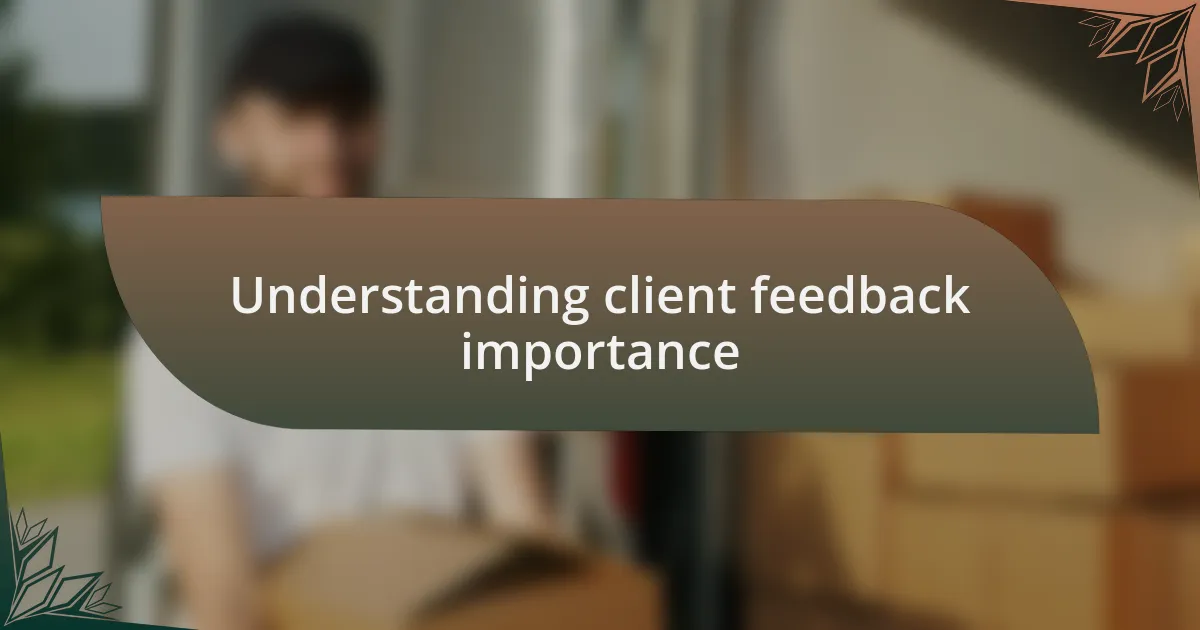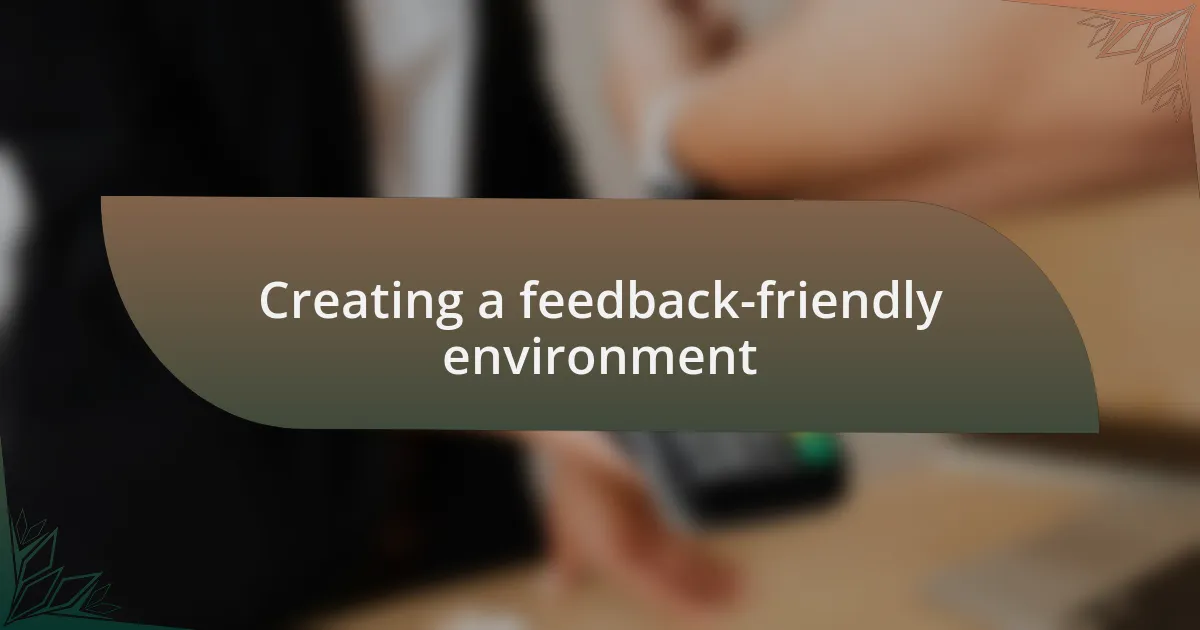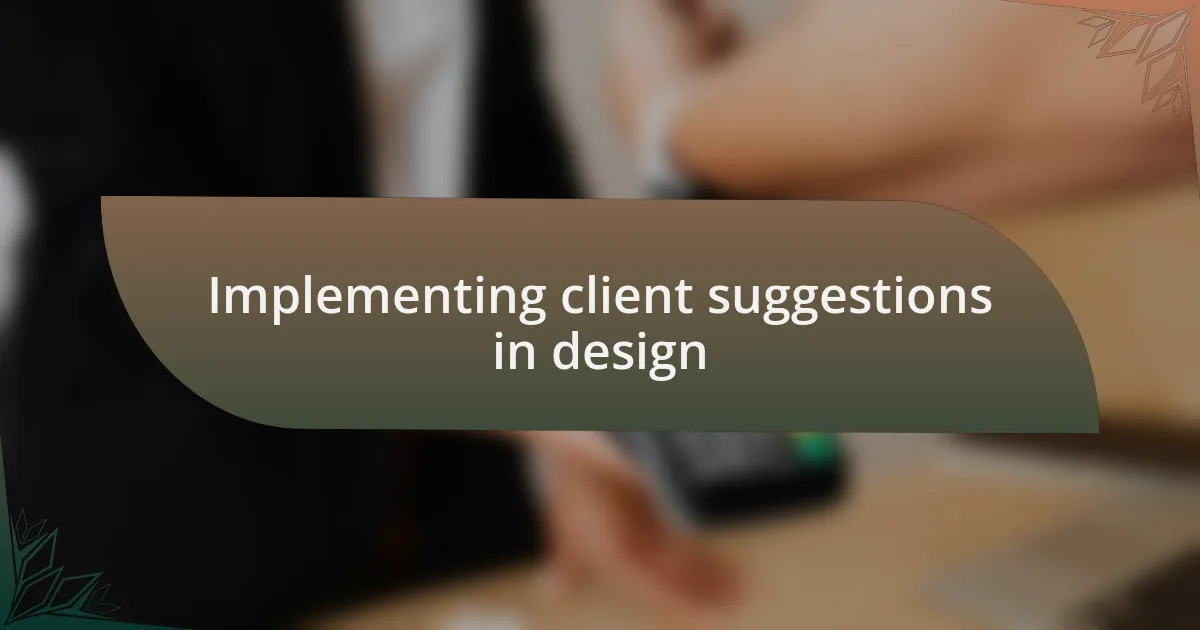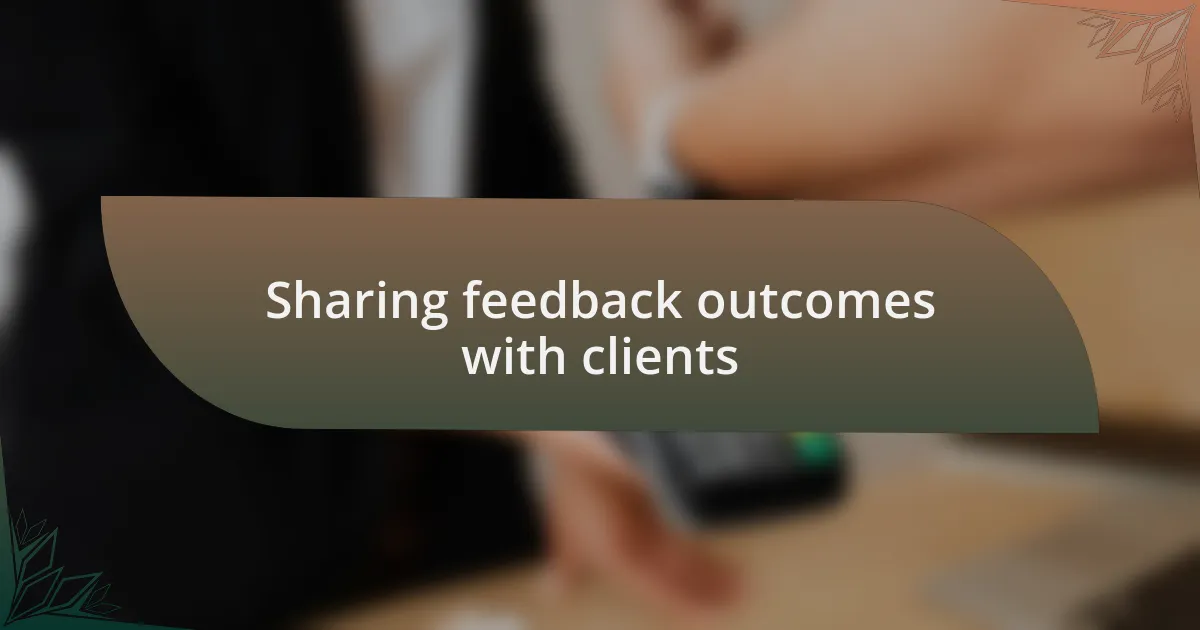Key takeaways:
- Client feedback is crucial for enhancing design, fostering trust, and promoting collaboration.
- Effective feedback collection methods include surveys, one-on-one interviews, and usability testing sessions.
- Creating a feedback-friendly environment involves open communication, appreciation of client insights, and ongoing engagement throughout the design process.
- Analyzing and implementing client suggestions not only improves the design but also strengthens client relationships through transparency and shared successes.

Understanding client feedback importance
Client feedback is invaluable in shaping our web designs to meet real needs. I remember a project where a client expressed frustration with navigation. Their insights prompted me to rethink the layout, ultimately leading to a streamlined user experience that not only satisfied the client but also enhanced the site’s overall usability.
Listening to clients fosters trust and builds long-lasting relationships. When I ask clients for their thoughts, I can’t help but feel a sense of partnership. How can we create an effective product without tapping into the experiences and perspectives of those who will use it? Their feedback often lights the way to improvements I may not have considered otherwise.
Moreover, client opinions serve as a compass for innovation. A past client suggested incorporating more interactive elements based on their audience’s preferences. That one piece of feedback transformed the end product and opened up avenues for creating engaging web experiences that resonate with users. So, is the design really complete without understanding the client’s vision and audience? I think not—it’s a collaborative journey toward excellence.

Methods for collecting client feedback
When it comes to gathering client feedback, I find that surveys are an excellent starting point. They offer a structured way for clients to express their opinions about our work. I once sent a simple survey to a client right after launching their site. The honest responses helped me identify areas for improvement, turning what could have been a one-sided relationship into a collaborative endeavor.
Another effective method is through one-on-one interviews. During a recent project, I set aside time to chat with the client about their experience. The conversation felt more personal, allowing them to share deeper insights and emotions. I was surprised by how candid and open they were, revealing their true feelings about the project and how it aligned with their vision. It made me realize that nothing beats the nuances of a face-to-face discussion.
Additionally, I’ve experimented with usability testing sessions. Inviting clients to walk through the design while voicing their thoughts in real time has been an eye-opener. In one instance, a client pointed out a confusing button placement that I’d become blind to during design iterations. Their feedback in that moment was invaluable, and it reinforced my belief that engaging clients directly can illuminate aspects of a project that may need a fresh perspective. Have you ever noticed how deeply clients appreciate being heard? It not only refines our designs but also strengthens our working relationships.

Tools for gathering client insights
When it comes to tools for gathering client insights, I really value using online platforms like Typeform or Google Forms. The user-friendly interfaces make it easy for clients to fill out their feedback at their convenience. I remember sending out a Typeform survey after a major project launch, and I was genuinely thrilled with the range of responses. It felt great to see how engaged my clients were, and the feedback I received was much more than just numbers; it was a window into their experiences and perceptions.
Another favorite tool of mine is video feedback platforms, such as Lookback or Loom. Recently, I invited a client to record a quick video sharing their thoughts on the design we created together. Watching them speak about their excitement and the features they loved was incredibly rewarding. It not only provided me with tangible feedback but also captured their enthusiasm in a way that words on paper just couldn’t convey. Have you ever noticed how visual cues can enhance understanding? I’ve found that these tools can bridge communication gaps in a unique, personal manner.
Social media is also a surprisingly effective tool for gathering insights. I’ve often launched brief polls on platforms like Instagram, where clients can vote on potential design elements or features. I recall one instance where I posted a couple of design mockups and the response from my audience was overwhelmingly helpful. Their preferences gave me direction and made them feel a part of the design process. It’s moments like these that truly reinforce the idea that client engagement isn’t just about feedback; it’s a partnership in creation.

Creating a feedback-friendly environment
Creating a feedback-friendly environment starts with establishing open lines of communication. I recall a project where I made it a point to welcome client thoughts during our initial meetings. By setting a tone of transparency, clients felt empowered to express their ideas without hesitation. Have you ever noticed how a welcoming atmosphere can lead to more honest discussions?
Another key aspect is to ensure that clients know their feedback is valuable and appreciated. I once sent a follow-up note thanking a client for their insights after a design review. They responded with such enthusiasm, noting how much it meant to them. This simple gesture not only reinforced the bond we had developed but also encouraged them to continue sharing their thoughts in future projects.
Finally, creating an ongoing feedback loop can greatly enhance the client experience. During a recent project, I implemented regular check-ins to gather thoughts at different stages. This approach not only kept the client in the loop but also made them feel integral to the creative process. When clients see their input shaping the output, it fosters a sense of collaboration that’s truly invigorating.

Analyzing feedback for actionable changes
When analyzing feedback, I emphasize looking beyond the surface comments to uncover deeper insights that drive meaningful change. For instance, I once received a critique about site navigation that seemed minor at first. However, after dissecting the feedback and observing user behavior through analytics, it became clear that simplifying menu categories would enhance the user journey significantly. Have you ever found that listening closely to what clients don’t say can be just as crucial as hearing their explicit concerns?
Additionally, I find it essential to categorize feedback into actionable segments. In a past project, we divided client suggestions into three areas: design, functionality, and content. This clear organization allowed the team to prioritize changes effectively and address critical issues first. By tackling feedback in manageable sections, we maintained focus and momentum while integrating client insights into the final product. Isn’t it intriguing how a structured approach can transform feedback into a roadmap for success?
Finally, I believe in the power of follow-up after implementing changes based on client feedback. After redesigning a website based on initial critiques, I reached out to the client to walk them through the updates and gather new impressions. Their excitement upon seeing their suggestions reflected in the final design was palpable. Such moments remind me that feedback isn’t just a tool for improvement; it’s a vital element that fosters a closer partnership with clients. Doesn’t it feel great when clients see their input manifest into tangible results?

Implementing client suggestions in design
Implementing client suggestions into design is where the magic truly happens. I recall a project where a client expressed a desire for a more vibrant color palette. Initially, I was hesitant, thinking it might clash with their brand identity. However, after some brainstorming and mockups, we found a perfect balance that not only honored their brand but also brought a fresh and exciting energy to the site. Isn’t it amazing how a simple change can breathe new life into a design?
Equally important is the ongoing dialogue with clients throughout the design process. I often invite clients to review drafts at different stages, which helps ensure their voices are woven into the fabric of the final product. During one project, a client suggested repositioning a critical call-to-action to enhance visibility. By embracing their insights and making that adjustment, not only did we improve the user experience, but we also increased conversion rates. Have you experienced the difference that open communication can make in achieving design goals?
Moreover, as part of the implementation process, I find it crucial to celebrate the collaboration with clients. After completing a design based on their suggestions, I like to host a presentation where we walk through the changes together. Their reactions, often filled with enthusiasm and pride, remind me of the powerful connection that feedback fosters. How rewarding is it to see clients not just satisfied, but truly invested in the design they helped create?

Sharing feedback outcomes with clients
Sharing feedback outcomes with clients is a pivotal part of the design journey. I remember a particular instance when I presented the final design after implementing client suggestions, and their eyes lit up with excitement. It was an emotional moment, feeling their joy and pride in a project they had a hand in shaping. How rewarding is it when clients recognize their contribution in the final product?
It’s essential to keep clients in the loop about how their feedback has influenced the design. After a significant revision stage, I often send a detailed report outlining the changes made based on their input, along with visuals to highlight enhancements. This not only validates their concerns but also builds trust. Have you ever noticed how transparent communication can strengthen client relationships?
Additionally, I find that scheduling a follow-up meeting to discuss the outcomes can be truly enlightening. During one such meeting, a client expressed how their feedback not only improved the design but also boosted their confidence in the site’s ability to attract customers. Hearing that reinforced my belief in the importance of embracing client insights. Isn’t it fascinating how feedback can lead to mutual growth in the creative process?